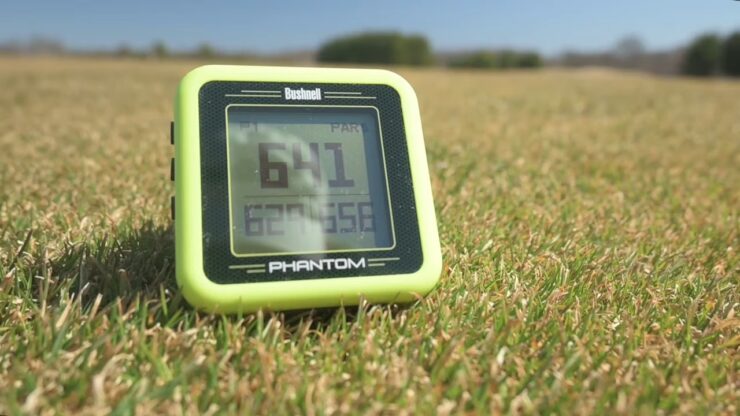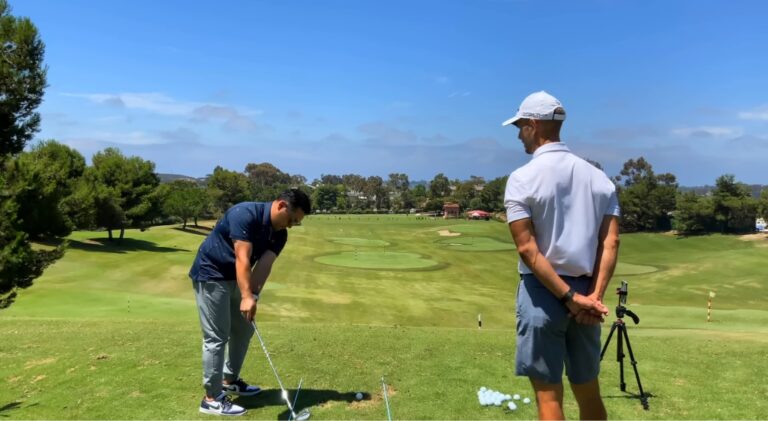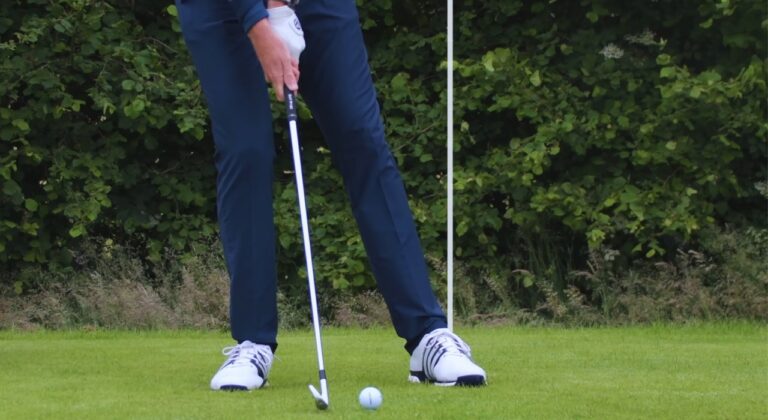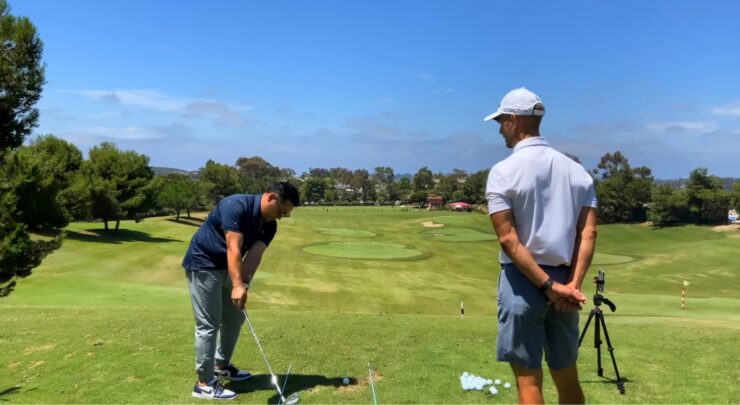The gentle breeze, a comforting presence on your skin. The melodious chirping of birds, nature’s own soundtrack. And then there’s me, navigating through the underbrush, in pursuit of my errant golf ball. Learn from me. Aim higher. Be better.
I took up golf when ‘Fast and Furious’ was merely a cult movie, not the global franchise it is today. Back then, ‘Tiger’ was a jungle cat, not yet the golfing G.O.A.T. he has become.
Over the years, I’ve seen the sport evolve with innovative changes that have improved gameplay and just made the general game more enjoyable.
Today, I’ll introduce you to one such innovation: the Golf GPS. But first, let’s understand what a Golf GPS is and how it works.
In essence, it is a device that uses satellite technology to provide accurate location information on a golf course. It can tell you the distance from your current location to the front, middle, and back of the green, as well as to hazards or specific targets.
This information can be incredibly useful in helping you choose the right club and plan your shots strategically. It’s like having a professional caddy in your pocket, offering advice on every shot.
1. Bushnell Phantom
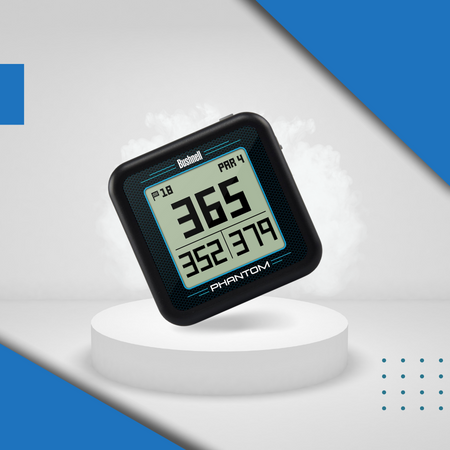
The moment I tried out the Bushnell Phantom Golf GPS, I knew my golfing game was about to change. This compact device, available in a sleek black color, seamlessly blends both form and function. When I first held it, I was immediately impressed with its sturdy build, giving it a durable feel.
But, the real game-changer was its performance on the course.
Loaded with over 36,000 courses from across 30 countries, this GPS provided me with clear front, center, and back distances. The visual hole layouts with distances, and the built-in BITE magnetic mount, made it incredibly user-friendly, allowing me to attach it to any metal surface with ease.
Another feature that won me over was its Bluetooth connectivity which enabled course updates without needing any additional setup on my part.
Its long battery life meant I didn’t have to worry about it dying in the middle of a game.
Ever since I started using the Bushnell Phantom, it has become an indispensable part of my golfing gear. While there are many GPS devices out there, this one truly felt tailored to my needs, enhancing my overall golfing experience.
Features:
- Allows for wireless course updates.
- It can last up to 2 rounds before needing a charge.
- The GPS comes preloaded with 36,000 courses across 30 countries.
- The device boasts an easy-to-use interface.
- Includes auto course recognition and auto hole advance.
- It is a basic model but with important features
- The battery can last a long
- It is very simple and easy to use
- The plastic casing can break easily
2. Garmin Approach G80
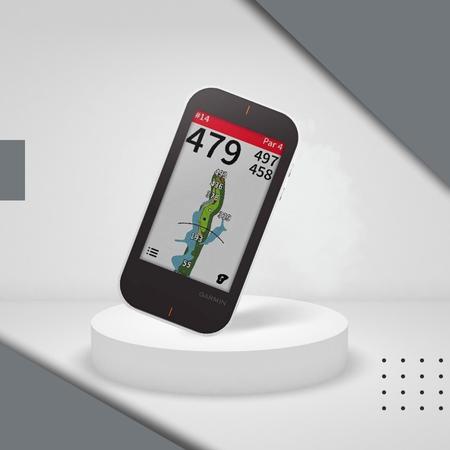
I used to own the Garmin Approach G80, and for a good duration, it was my trusty companion on the greens. This all-in-one gadget seamlessly blends GPS capabilities with a launch monitor, making it a unique offering in the market.
The 3.5” touchscreen is clear and easily readable, even under the glaring sun. Its launch monitor feature was a standout, offering data on club head speed, ball speed, and more.
While it served me well for a long time, I eventually moved on to a different device. But the G80’s features and performance left a lasting impression.
Features:
- All-in-one golf handheld with integrated launch monitor.
- Features 3.5” sunlight-readable touchscreen display.
- Provides practice and game modes to test your skills.
- Preloaded with more than 41,000 detailed color golf course maps worldwide.
- Measures shot distance with auto club tracking for post-round analysis
- Clear and bright display
- Accurate GPS and launch data
- Vast preloaded course database
- Useful practice modes
- Comprehensive post-round analysis
- Slightly bulky design
- Battery life could be better
3. GolfBuddy Voice 2
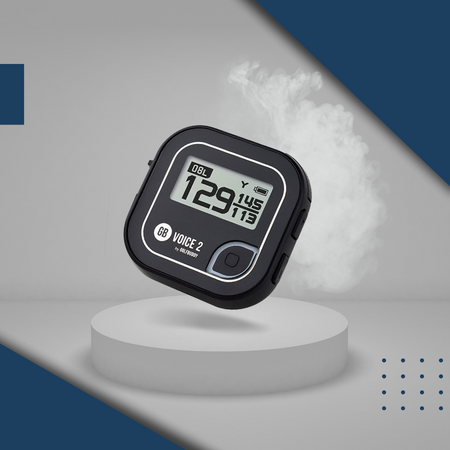
If you’re the kind of golfer who likes to match their gear to their outfit, then the GolfBuddy Voice 2 might just be your perfect accessory. Available in a variety of colors, this device lets you customize your look on the course like no other.
Not only is it a fashion statement, but it’s also the smallest device on our list, making it a lightweight companion on the course.
Its simplicity of use is a major plus, and it even features a voice readout, making it one of the standout Golf GPS devices on the market. And the cherry on top? It’s budget-friendly, so you can up your game without downing your bank balance.
Features:
- Provides distance information both audibly and on the screen.
- Convenient voice guidance.
- Offers a green view (Right & Left).
- Can be hung on a hat or belt for unobtrusive play.
- Adjustable audio guide volume (0 – 5).
- Affordable price
- Waterproof
- Very simple to use
- Long battery life
- It is not a waterproof device
4. Garmin Approach G30
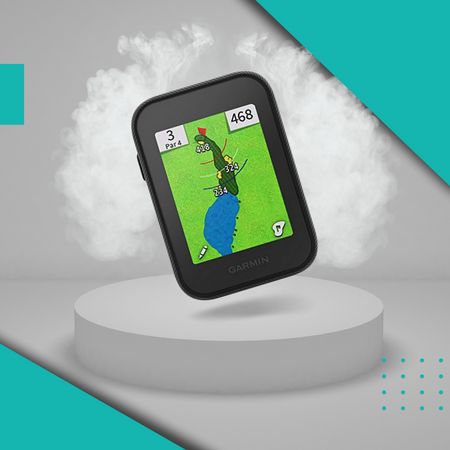
Did you really think that the previous Garmin would be the only one on this list I’ve made? Well, think again. Here’s their second contender.
If you’re on the hunt for a touchscreen device, then the Garmin Approach G30 might just be the treasure you’re seeking. This high-quality device sports a slightly rounded back and a sleek design, making it a stylish addition to your golfing gear.
Simply power it on with the press of a button, and the rest is a breeze with the user-friendly touchscreen which made my job significantly easier.
However, be prepared to shell out a pretty penny for this one. It’s a premium device with a price tag to match. But trust me, it’s worth every pretty penny.
Features:
- Sleek, compact handheld golf GPS with a 2.3-inch color touchscreen display.
- Bluetooth enabled for easy connectivity.
- Quickly acquires satellites to show distance to greens, hazards, and doglegs.
- Comes preloaded with more than 40,000 courses worldwide.
- Features Touch Targeting for precise yardage.
- Colorful display screen
- You can receive calls and text notifications
- It has a touch screen.
- It is a bit expensive
5. Voice Caddie VC300SE
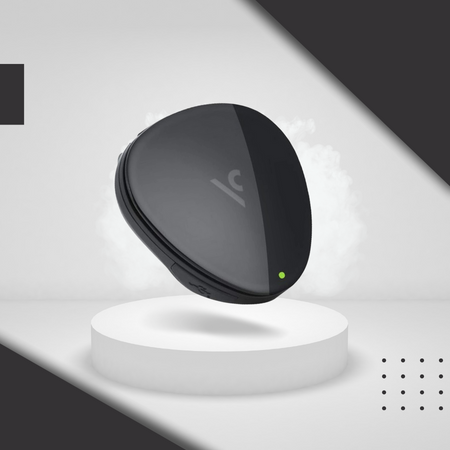
Check on Amazon Check on eBay Check on VoiceCaddie
Rounding out our list is the Voice Caddie VC300SE Golf GPS.
Available in two classic colors, black and white, this device is a study in simplicity. It’s affordable, compact, and a breeze to use. This touch device guides you through voice messages, making it a handy companion on the course. You can hold it in your hand or simply leave it in your pocket.
While it might not necessarily outshine all others on the list, when it comes to value for money, it’s definitely the clubhouse leader.
Features:
- The device provides distance information through voice.
- The product can be updated easily without any additional costs.
- The VC300SE automatically recognizes the golf course and hole.
- Help players achieve better swing rhythm using a golf metronome system.
- It can measure the distance of your shots.
- It is a simple and affordable device.
- It is a very small device
- Only two colors are available
Buying Guide
When it comes to purchasing a Golf GPS, it’s not as simple as picking up the first device you see on the shelf. There are several key factors to consider to ensure you’re making the right choice for your needs.
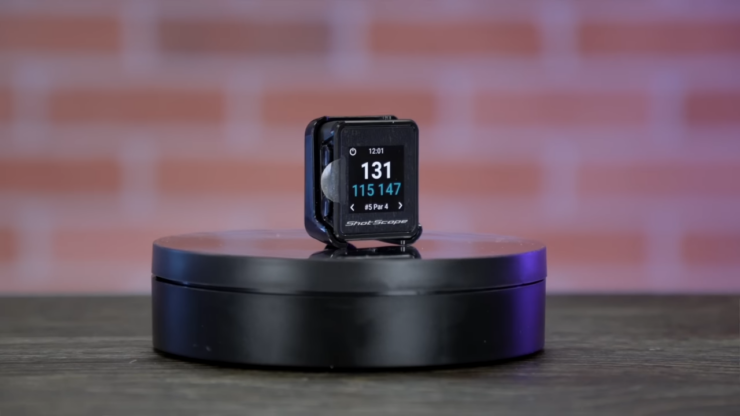
Battery Life
One of the most crucial factors to consider when buying a Golf GPS is battery life. As a golfer, you don’t want to be tethered to a charging station. You want a device that can keep up with you on the course. Ideally, you should opt for a device that can last for at least 12 hours on a single charge.
This means you can comfortably play one or two rounds without worrying about your device dying on you. A Golf GPS with a long battery life offers you the freedom to focus on your game, not on finding the nearest power outlet.
Ease of use
Another key factor to consider is ease of use. When you’re new to using a Golf GPS, you don’t want to spend a lot of time just figuring out how to operate the device.
Golf is a game of movement and focus, and you don’t want to be distracted by a complicated device. Look for a Golf GPS with intuitive settings and straightforward navigation options. The quicker you can get to grips with your device, the quicker you can get back to improving your swing.
Green mapping
Green mapping is a feature that might only be available on the latest and high-end devices, but it’s a game-changer. When you’re far from the greens or unfamiliar with the course, a device with green mapping can provide valuable information about the greens and the holes on the course.
This feature can give you a strategic edge, helping you plan your shots more effectively and potentially shave strokes off your game.
Preloaded Courses
Some Golf GPS devices come with preloaded golf courses, which can be a major advantage. These devices can provide detailed information about specific courses, helping you navigate them more effectively.
If you frequently play on popular courses, or if you like to explore new ones, a device with preloaded courses can be a valuable tool in your golfing arsenal.
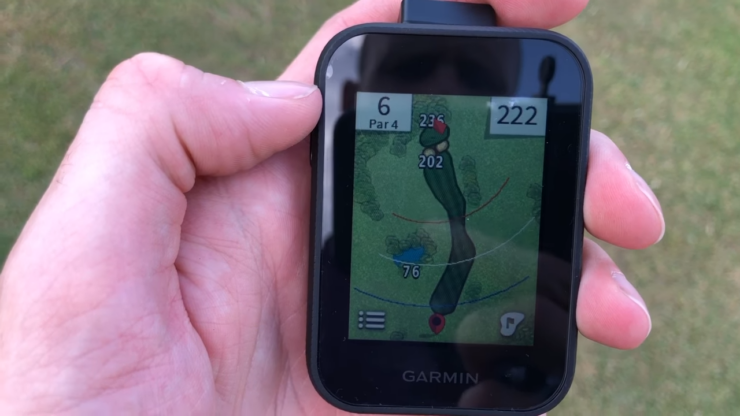
Touchscreen
For ease of operation, a touchscreen Golf GPS device can be a great choice. These devices allow you to navigate menus and select options simply by touching the screen, making them incredibly user-friendly.
However, it’s worth noting that touchscreen devices can be a bit more expensive than their button-operated counterparts. If budget is a concern, you’ll need to weigh up the convenience of a touchscreen against the potential extra cost.
Waterproof
Golf is an outdoor sport, and that means you’re at the mercy of the elements. Whether it’s a sudden downpour or just a particularly sweaty round, you don’t want your Golf GPS to throw in your golf towel before you do. Opt for a waterproof device to ensure that a little rain or sweat won’t stop you from playing your best game.
Scorecard viewer
Some Golf GPS devices come with a scorecard viewer feature, allowing you to view, save, and track your scorecards. This can be a great way to monitor your progress over time, identify areas for improvement, and celebrate when you beat your personal best. If you’re serious about improving your game, a scorecard viewer can be an invaluable tool.”
Types of Golf GPS
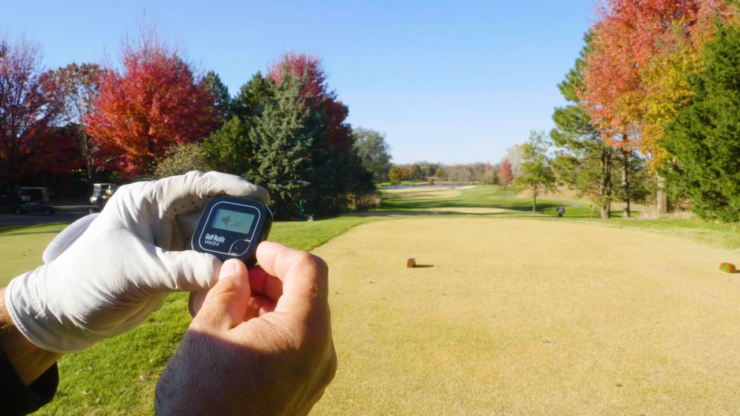
When it comes to golf GPS devices, there are two main types you’ll encounter: the watch and the handheld. Each has its own set of advantages and disadvantages, and the right choice for you will depend on your specific needs and preferences:
GPS Watches
Offering the ultimate in convenience. Designed to be worn on your wrist just like a regular watch, they’re always within easy reach. They’re typically lighter and more comfortable to carry around than a handheld GPS, making them a great choice if you prefer to keep your hands free. Many GPS watches also come with additional features like fitness tracking, making them a versatile addition to your golfing gear.
However, GPS watches do have their drawbacks. Their screens are often smaller than those of handheld devices, which can make them more difficult to read, especially in bright sunlight. Additionally, because they’re worn on your wrist, they can sometimes interfere with your swing, particularly if you’re not used to wearing a watch while playing.
Handheld GPS
On the other hand (or in the hand), are the handheld units known for their larger, more readable screens. If you’re someone who appreciates a clear, detailed display, a handheld device might be the best choice for you. They’re also typically easier to use when it comes to inputting data, such as course information or new tee times, thanks to their larger size and more spacious interface.
However, handheld GPS units can be bulkier and more cumbersome to carry around than watches. If you’re walking the course, you might find it inconvenient to have to carry a separate device. Some golfers also find that they prefer to keep their hands free during play, which can make a handheld device less appealing.
FAQ
Do Golf GPS Devices Require a Subscription?
While many golf GPS devices can be used without a subscription by downloading free course maps from the manufacturer’s website or a third-party source, some premium features may require a subscription. These features can include access to a larger number of courses, more accurate yardages, and other advanced functionalities.
Subscription costs typically range from around $5-$10 per month.
What is the Easiest Golf GPS to use?
If ease of use is your top priority, the Bushnell Neo+ Golf GPS is a strong contender. This device is designed with simplicity in mind, providing all the essential information you need on the course without any unnecessary complications.
What is the difference between a golf GPS and a rangefinder?
A golf GPS and a rangefinder serve similar purposes but in slightly different ways. A golf GPS provides information about the distance to the hole and identifies any potential hazards on the course, helping you strategize your shots.
A rangefinder, on the other hand, focuses on providing an accurate measurement of the distance to the flag, which can be particularly useful when you’re trying to perfect your putt. Both tools can be valuable additions to your golfing gear, depending on your specific needs.
How accurate is a golf GPS?
The accuracy of a golf GPS can vary, but generally, these devices are accurate to within a few yards. However, certain factors can affect this accuracy. For instance, if you’re playing on a hilly course or one with a lot of trees, your GPS may not be as accurate as it would be on a flat, open course.
Similarly, adverse weather conditions like high winds or rain can also impact the device’s accuracy. It’s important to take these factors into account when relying on a golf GPS for distance measurements.
The Bottom Line
After spending countless hours on the green and researching various devices, I’ve come to the conclusion that the right GPS can truly transform your game. It’s not just about measuring distances; it’s about understanding the course, strategizing your shots, and gaining that extra confidence with each swing.
For me, the one seamlessly blends accuracy with user-friendliness, offering features like automatic hole recognition, swing analysis, and even voice-guided distances. It’s like having a personal caddie in your pocket.
If you’re serious about improving your game and making the most of your time on the course, investing in the best golf GPS is a decision you won’t regret.
A lifelong devotee of the sport, Kane Franco serves as a Senior Staff Writer for Florida Elite Golf Tour. His expertise, coupled with a genuine desire to assist golfers in selecting the optimal gear, has led him to oversee a team of writers dedicated to providing the most precise and insightful reviews and purchasing guidance.

